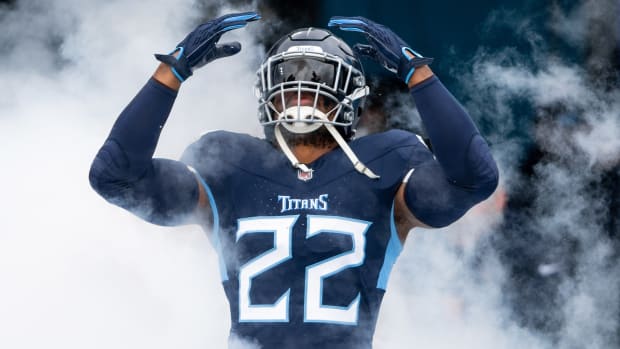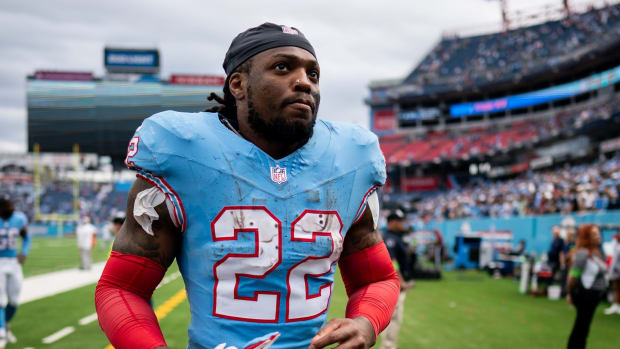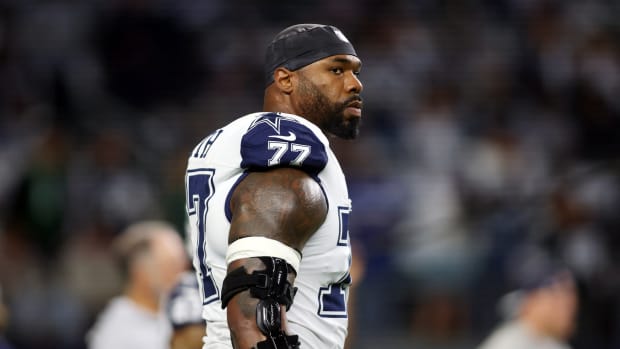How the Titans Went From 7-3 to Out of the Playoffs
Not that long ago, it seemed like a foregone conclusion that the Tennessee Titans were headed to a third straight division title and a fourth straight playoff appearance. Ten games into their schedule, any simulator you could find determined that they had better than a 90 percent chance to reach the postseason.
With Saturday’s 20-16 loss to the Jacksonville Jaguars, all of it was long gone. No first-place finish. No playoff game. No wins since mid-November.
That’s right, a seven-game playoff streak sunk the Titans to second place and spectator status beginning with next week’s wild card contests.
“I think we all stood by each other, supported each other,” coach Mike Vrabel said. “We just got on a shitty streak, and we couldn’t get off of it. We couldn’t make the plays when we needed to. We couldn’t just be consistent enough when we needed to. It showed up again (Saturday) night.”
So, how exactly did the Titans go from 7-3 to where they are now? Here are a few of the ways.
• Fourth quarter failures: Four times in the last seven losses, the Titans had a lead or were tied in the fourth quarter but failed to get across the finish line.
It started when they entered the fourth quarter with Cincinnati deadlocked at 13-13 and then gave up an early touchdown that they could not answer. They pulled even with the L.A. Chargers at 14-14 with 48 seconds to go yet could not even get out of regulation as the Chargers quickly got into position for a game-winning field goal.
Tennessee was up 14-10 on hapless Huston before a Derrick Henry fumble started a run of 10 unanswered Texans’ points.
Finally, a 16-10 lead over Jacksonville shrunk to 16-13 in the opening minute of the final period. It stayed that way until Josh Dobbs was sacked and fumbled, and Jacksonville’s Josh Allen returned the takeaway 37-yards for the game-winning score with 2:51 remaining.
• Turnover turnaround: Tennessee was minus-7 in turnover ratio during the losing streak, including a whopping minus-5 in the two losses to Jacksonville. In the first meeting between the division rivals, the Titans were minus-4 with three fumbles lost and one interception, all of which led to 20 Jaguars’ points.
It was just minus-1 (two giveaways, one takeaway) in Saturday’s rematch. Tennessee turned its one takeaway into a seven-play, 69-yard touchdown drive (its only touchdown of the night), but Jacksonville, of course, but the extra one for Jacksonville immediately turned into Allen’s decisive score.
The Titans were plus-1 against the Cowboys and Chargers, but even then, it was not enough.
In the first 10 games, Tennessee was plus-2 in turnovers and never had consecutive games on the wrong side of the turnover ratio.
• Injuries, injures and more injuries: The Titans finished the season with 23 players on injured reserve, and more than half of them got there during the seven-game slide to end the season. Thirteen – that’s right – 13 players were deemed unfit to finish the season since the loss to Cincinnati on Nov. 27.
Two of them (defensive back Elijah Molden and inside linebacker Zach Cunningham) went on injured reserve for the second time. Others who made the same move included quarterback Ryan Tannehill, inside linebacker David Long, outside linebacker Bud Dupree, center Ben Jones, right guard Nate Davis and running back Dontrell Hilliard – all significant contributors.
Under Vrabel, Tennessee has shown a remarkable ability to deal with and overcome injuries. There’s no better evidence than last season’s 12-5 record that included an NFL-record 91 different players in uniform along the way.
This time, though, the players who could help stem the tide continued to vanish as the losses continued to pile up, and it was too much to ask of those who remained.
• The A.J. Effect: Something seemed different after the 35-10 loss to the Philadelphia Eagles on Dec. 4 – the second defeat in the streak.
Maybe it was watching A.J. Brown do to the Titans the kinds of things he had done for the Titans over the previous three years (eight receptions, 119 yards, two touchdowns). It was one thing to practice and play without Brown. It was another thing to get such a stark reminder of what he could have meant to their offense had he not been sent to Philadelphia in a trade during the first day of the 2022 NFL Draft.
It could have been the fact that general manager Jon Robinson was fired two days later. In her statement to announce the move, controlling owner Amy Adams Strunk cited “team construction/roster building” as one of the factors. Did the players read into that an assertion that they’re not good enough? And if so, did that sap their motivation or belief in themselves for a time?
Whatever it was, the Titans gave up 26 straight points during one stretch against Jacksonville the following week and never led in two of the next three games. In between, they lost to Houston, which came into that contest on a nine-game losing streak.
• Pressure relieved: Vrabel talks repeatedly about the need to affect the quarterback. That could be forcing him out of the pocket and to throw on the run. It could be getting close enough that his ability to see the entire field is compromised. It could be forcing him to throw the ball sooner than he wants.
Of course, nothing affects a quarterback more than getting him to the ground. Sacks. Tennessee sacked opposing quarterback nine times in the last seven games. The only ones they got to more than once were Justin Herbert (three) and Philadelphia’s Jalen Hurts (two). Jacksonville’s Trevor Lawrence went down once in two games.
Contrast that to the early part of the season. The Titans 30 sacks in the first 10 games with at least one in all 10, as many as six in a single game (Denver on Nov. 13) and three or more in six straight games beginning Week 4 against Indianapolis. Not coincidentally, Tennessee went 5-1 over that six-game stretch.
An ankle injury slowed Jeffery Simmons during the second half of the season, and Denico Autry missed four straight with a knee injury. Dupree ended up on injured reserve. Of course, Harold Landry was never a part of the pass rush this year.
Regardless of what combination of those things had the biggest impact on the sack numbers, it was clear that opposing quarterbacks got way too comfortable.






